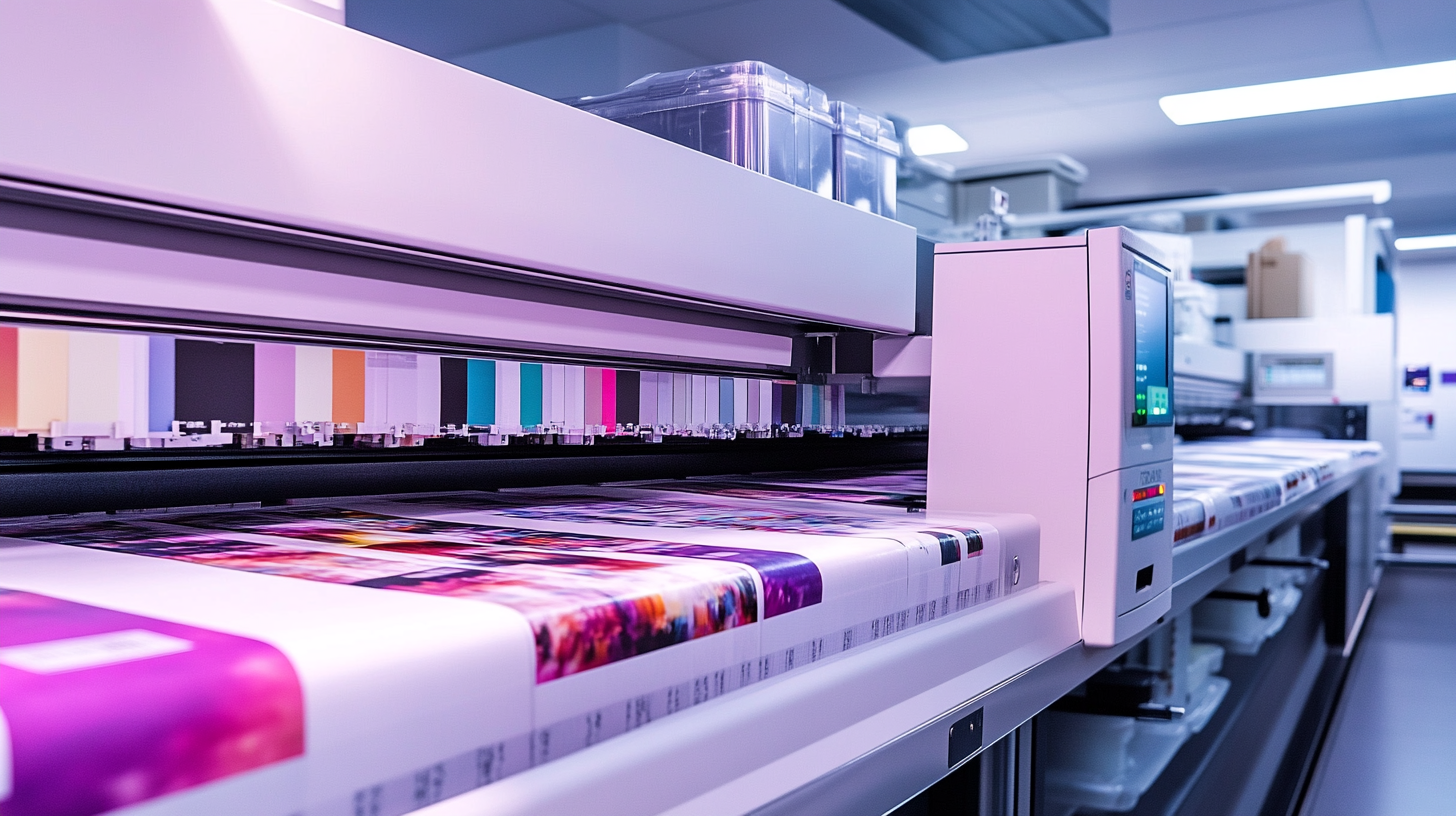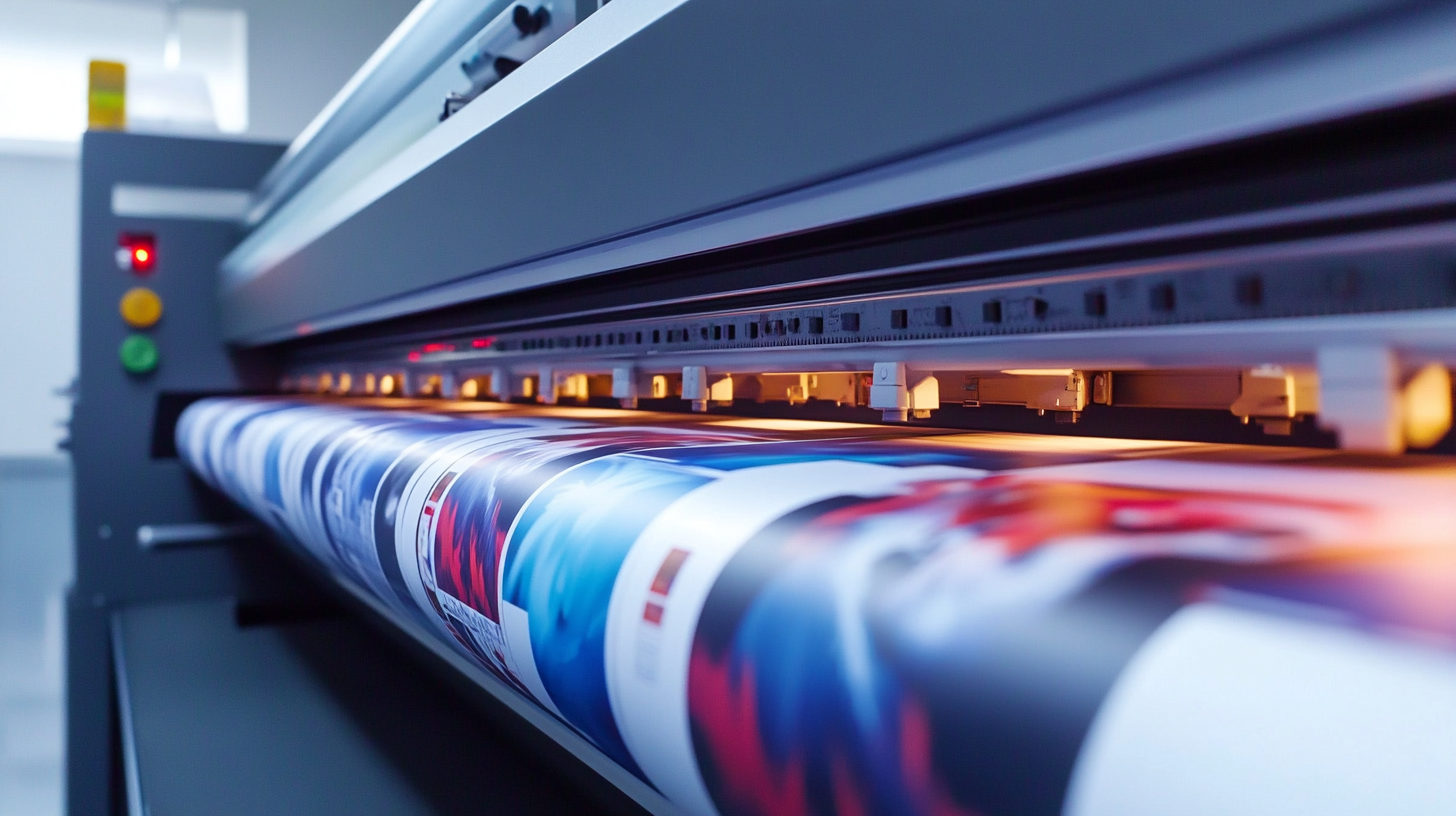 In an era where personalization and branding are paramount, the demand for high-quality stickers has surged, propelled by advancements in technology and design. The sticker printer industry stands at the forefront of this transformation, innovating to meet the evolving needs of consumers and businesses alike.
In an era where personalization and branding are paramount, the demand for high-quality stickers has surged, propelled by advancements in technology and design. The sticker printer industry stands at the forefront of this transformation, innovating to meet the evolving needs of consumers and businesses alike.
As we explore the future of premium sticker printing, it's essential to acknowledge how cutting-edge technologies are reshaping capabilities, enhancing print quality, and expanding customization options. This blog will delve into emerging trends such as eco-friendly materials, digital printing technologies, and sophisticated design software, which are all set to revolutionize sticker production.
With "精工细造,中国制造,服务世界" as a guiding principle, we will also examine how Chinese manufacturing is set to play a pivotal role in serving global markets, ensuring that the next generation of sticker printers not only meets demands for excellence but also prioritizes sustainable practices.
The landscape of premium sticker printing is undergoing a significant transformation driven by emerging technologies. One of the most notable trends is the rise of digital printing solutions, which enable faster turnaround times and customizable designs without the need for extensive setup. This flexibility allows brands to respond rapidly to market demands and consumer preferences, fostering a more personalized customer experience. Additionally, advancements in ink formulation and printing materials are enhancing durability and vibrancy, ensuring that stickers not only look great but also withstand environmental challenges.
Another key trend shaping the future of premium sticker printing is the integration of automation and artificial intelligence. Automated workflows streamline the printing process, reducing labor costs and minimizing human error. AI-driven design tools are empowering creators to generate innovative and unique sticker concepts, pushing the boundaries of creativity. Moreover, technologies like augmented reality (AR) are beginning to make their mark, turning static stickers into interactive experiences that can engage customers in new and exciting ways. As these innovations continue to evolve, the premium sticker printing market is poised for remarkable growth and transformation.
| Trend | Description | Impact | Year to Watch |
|---|---|---|---|
| Eco-Friendly Materials | The shift towards biodegradable and recyclable sticker materials. | Reduces environmental impact and appeals to eco-conscious consumers. | 2025 |
| Digital Printing Advancements | Utilizing state-of-the-art digital printers to enhance color quality and precision. | Improves customization and reduces production time. | 2024 |
| Augmented Reality Integration | Creating interactive stickers that utilize AR technology. | Enhances consumer engagement and experience. | 2026 |
| Smart Stickers | Stickers embedded with NFC technology for smart interactions. | Provides a new way for brands to connect with consumers. | 2025 |
| On-Demand Printing | The ability to print custom sticker designs on demand. | Minimizes waste and allows for rapid product offerings. | 2023 |
In today's market, sustainability has become a critical focus for manufacturers, especially in the sticker printing industry. According to a recent report by Smithers Pira, the demand for sustainable packaging solutions is expected to reach $500 billion by 2025, highlighting a significant shift towards eco-friendly practices. This trend is reflected in the growing use of biodegradable materials and recyclable inks, which not only minimize environmental impact but also cater to the increasing consumer preference for green products.
Moreover, advancements in technology are enabling manufacturers to adopt innovative print techniques, such as water-based inks and digital printing methods, which significantly reduce waste and energy consumption. A study from Technavio predicts that the global market for sustainable printing materials will grow at a CAGR of over 7% between 2021 and 2025. This growth emphasizes the industry's commitment to integrating eco-friendly materials into their operations, giving sticker printing companies a competitive edge while contributing positively to the planet. As a result, those who prioritize sustainability in their manufacturing processes are likely to thrive in the evolving marketplace.
The global demand for premium stickers is on an upswing, with projections indicating significant growth by 2025. This increase is attributed to various market factors, including evolving consumer preferences, the expansion of e-commerce, and the rise of self-expression through personalized products. As people seek unique ways to showcase their individuality, premium stickers are becoming a popular choice for customization, not just for personal use but also for branding and promotional purposes.
Innovations in sticker printing technology are also contributing to this burgeoning market. Advanced printing techniques, such as digital and eco-friendly printing, are making it easier to produce high-quality, vibrant stickers in smaller batches, catering to niche markets. Additionally, the integration of smart technology, such as QR codes and NFC tags embedded in stickers, is enhancing their functionality, making them more appealing to tech-savvy consumers. As these trends continue to shape the landscape, businesses that adapt to these innovations and consumer preferences will likely thrive in the premium sticker printing market.
This chart illustrates the projected growth in global demand for premium stickers from 2021 to 2025, highlighting a steady increase that is anticipated as innovations in printing technology and design continue to evolve.
In the rapidly evolving world of sticker printing, personalization has taken center stage, driven by innovative, data-driven customization techniques. Businesses and artists alike are tapping into the power of data analytics to gain insights into consumer preferences, allowing for the creation of unique, tailor-made stickers that resonate with specific audiences. This shift towards personalized products not only enhances customer satisfaction but also fosters brand loyalty, as customers feel a deeper connection to items that reflect their individuality.

To harness the potential of personalized sticker printing, consider implementing customer feedback loops. Engaging with your audience through surveys and polls can provide valuable insights into design preferences and desired features. Additionally, utilizing social media platforms to showcase customization options can stimulate interest and drive engagement.
Another effective strategy is to leverage advanced printing technologies, such as digital print and variable data printing, which allow for high-quality, on-demand production of customized stickers. This not only reduces waste but also enables businesses to respond quickly to market trends, ensuring they stay ahead in a competitive marketplace. Embracing these innovations will help establish a forward-thinking approach to sticker printing that prioritizes personalization.
In recent years, the sticker industry has experienced significant growth, driven by technological advancements and changing consumer preferences. According to a recent report by MarketsandMarkets, the global sticker market is projected to reach $50.4 billion by 2027, growing at a CAGR of 4.3%. This growth is fueled by innovations in digital printing technology, allowing for faster production times and more intricate designs. Key players like Avery Dennison and 3M are at the forefront, continuously investing in new technologies that enhance the durability and aesthetic appeal of stickers.
The competitive landscape is increasingly characterized by sustainability initiatives. Brands are embracing eco-friendly materials, responding to consumer demand for environmentally responsible products. A survey by Statista revealed that 70% of consumers prefer brands that prioritize sustainability. Companies such as Sticker Mule are leading the charge, implementing biodegradable materials and water-based inks. As the market evolves, the importance of digital marketing strategies cannot be overstated; brands are leveraging social media platforms to engage with consumers more directly and build brand loyalty, further shaping the future of premium sticker printing.

